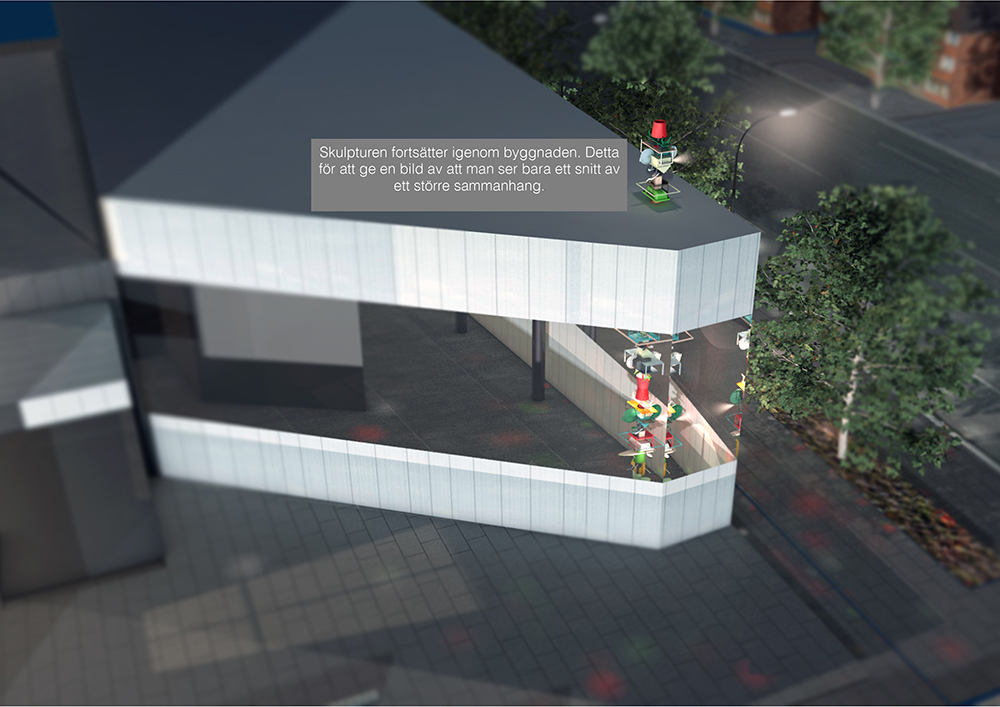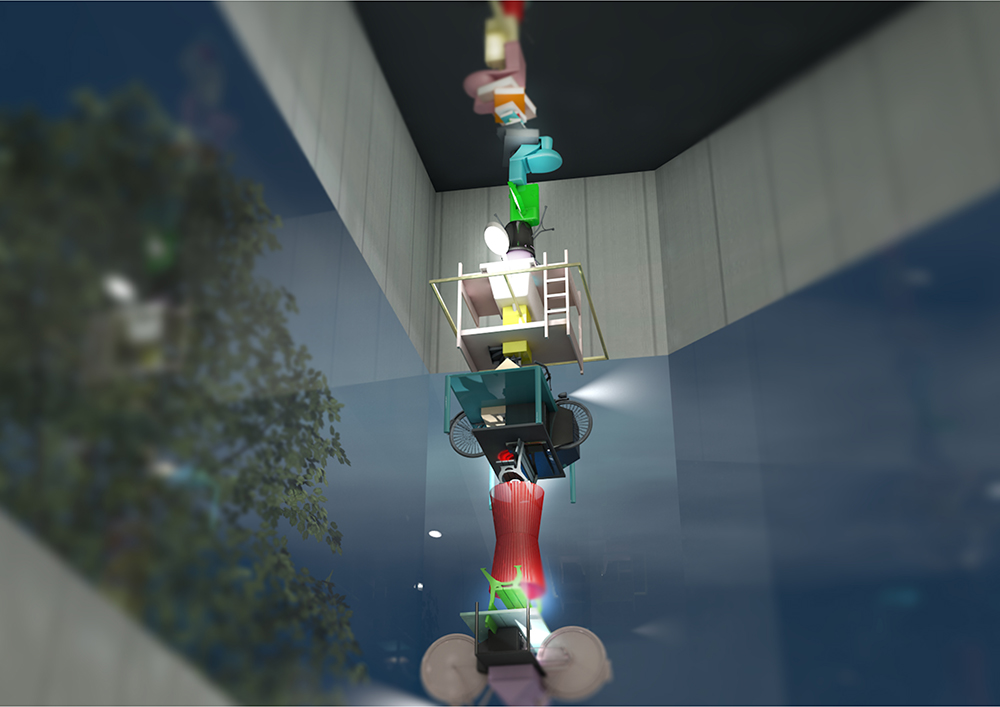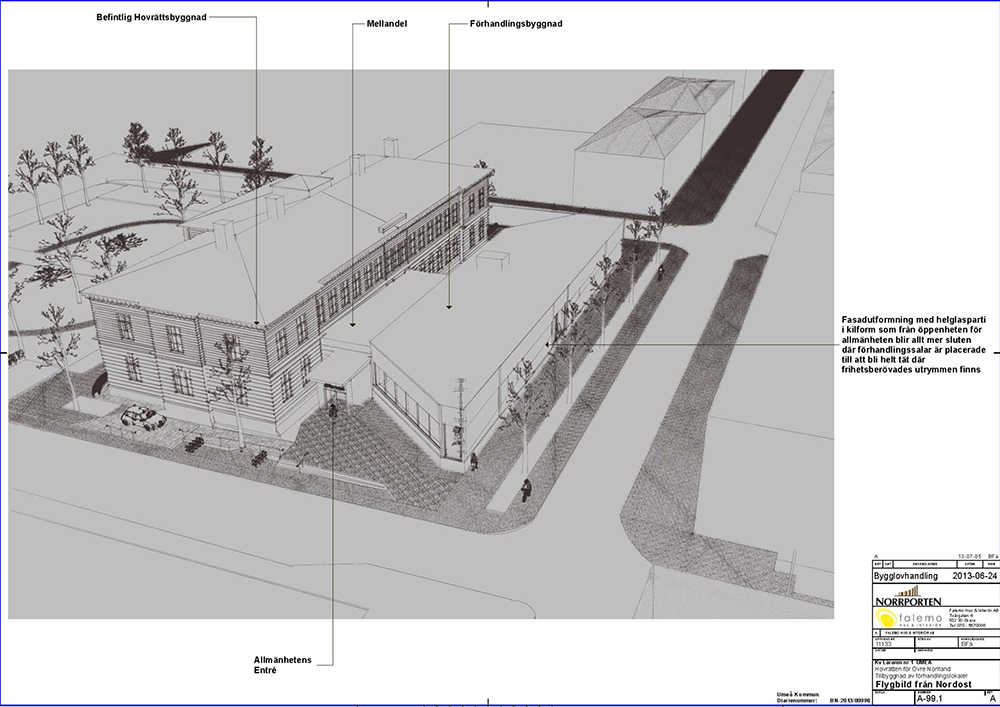A mockingly provocative small monument to memory has landed in the Umeå winter darkness. It sticks up in the urban landscape along Kungsgatan as a shining antennae or rod towards the distant sky. It has its home on the roof of the new Court of Appeals building, but the work of art begins her fragile upwards quest already in the building’s foyer. Sirous Namazi’s sculpture Rekonstruktion is a frozen moment of pop art, surrealism, and a huge portion of Namazi.
































The Court of Appeal for Northern Norrland in central Umeå has changed its distinguishing feature with a new expansion of its building. A snow-white pavilion along the street level marks a clear break with the older architecture. Behind the pavilion, one finds a 1880s neo-Renaissance building, where judicial proceedings have been taking place for decades. When visitors step into the new foyer, the room spreads out formally and strictly. The pillars in the room are so functionally shaped that they can be experienced as black vertical lines. Among these, there is a colourful and amusing column. It is built of objects stacked upon each other. The things feel familiar, yet not. They are neither miniature dollhouse furniture, nor objects in the familiar scale of 1:1.
Den blanklackerade ytan skapar intryck av att något är både fångat och flyktigt i samma objekt. Kanske likt minnet självt.
The sculpture constructed from odd things in strange sizes arouses curiosity; it entices the viewer to get close and allow their eyes explore the stack. The sculpture gently shakes up the everyday, mundane vision.It is not only the sculpture’s scale which has displacements, it is also something with the objects. Is that a bicycle over there; or is it Mickey Mouse’s ears? How can a goblet get bones from an ironing board? With gaudy colours, these unpredictable everyday objects build upon each other. The glossy varnished surface creates the impression that something is both captured and ephemeral in the same object.
Perhaps, like memory itself.Rekonstruktion is that state of limbo when a groggy person wakes up from an intense dream. But it is not what is in Namazi’s head that we see. The sculptural pieces are based on that the artist transformed his studio, for a period, into a room to receive testimonies. The witnesses with so different backgrounds and of various ages were invited to remember the artist’s visual composition of objects. The witnesses put their memories to paper, sketching out what they had just seen. Their “memory drawings” have been translated into a round sculpture of recollections and reminiscences.
Of course this is a process that opens the art up to multiple interpretations. Namazi manipulates his own work when he invites strangers in to write down their recollections. Since his oeuvre is characterised by precision and accuracy, this is a daring approach.The sculpture, which is progressively changing, is a model of how memory works. In his artistic work, in recent years Namazi has explored memory and how the memory can be mapped and depicted with particular intensity. The Court of Appeals works professionally with memories and recollections each and every day. In Umeå, Rekonstruktion has both its origin and residence, created for and in cooperation with the Court of Appeals.
On Sirous Namazi
Sirous Namazi was born in 1970 in Kerman, Iran. He studied at the Forum Art School in Malmö and the Malmö Art Academy. Throughout his artistic career, Sirous Namazi has returned to themes of the mechanisms of the memory. His installation art filling entire rooms contain objects from everyday life – however are often so twisted in their position that they also raise questions about how we live and think in contemporary society. Sirous Namazi represented Sweden at the Venice Biennale 2007, and his art is displayed in international galleries. He has numerous works of art in process that will be completed for installation in public buildings in Sweden over the coming years. Sirous Namazi resides in Stockholm.
Read more
Find the artwork
Hovrätten för Övre Norrland, Umeå, Vinter 2016
Storgatan 39, 903 25 Umeå, Sverige